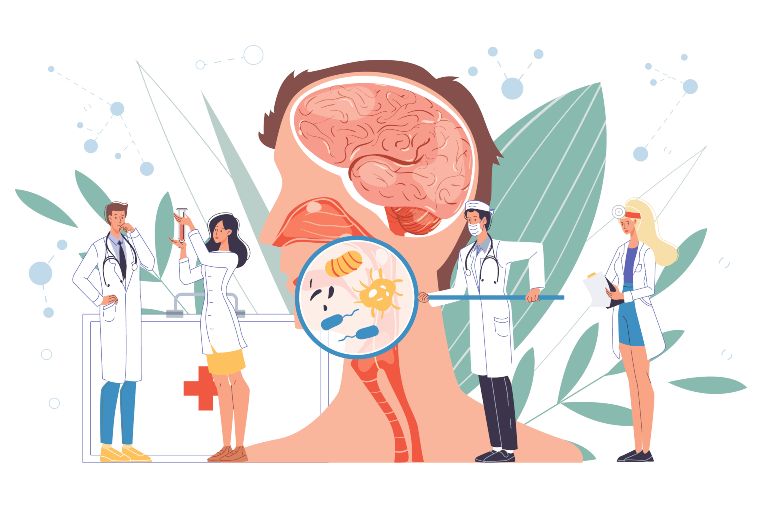Salivary glands are located in your mouth. There are three sets of large salivary glands: Parotid glands can be found just below each ear on the front side. Submandibular glands are located under the jaw. Sublingual glands are below your tongue. Our mouth also has hundreds of smaller glands. What do salivary glands do? Well, these glands produce saliva (spit) and release it into the mouth via openings called ducts. Saliva keeps food moist, which helps you to chew and swallow. Also, saliva helps you digest food properly. Saliva additionally keeps your mouth healthy and clean because it carries antibodies that kill germs. If the salivary glands are infected or aren't creating enough saliva it can affect the taste. This will make chewing and swallowing hard and sometimes painful.
This can also increase the risk for tooth loss, cavities and infections in the mouth. It's important to take care of your oral health so let's take a look at potential problems and infections concerning salivary glands.
Sialadenitis is an often serious salivary gland infection. Staphylococcus, Haemophilus influenza, streptococcus or anaerobic bacteria are normally the cause. This condition is typical among elderly people who have salivary gland stones. However, babies can develop sialadenitis throughout the first few weeks of their life. If not treated properly, sialadenitis can become a severe infection.
Sialolithiasis is a condition where small salivary stones form in the glands. These stones are named sialoliths. They are made of calcium. Some stones do not cause any symptoms, but some of them can block the ducts. This may cause a blocked salivary gland. The saliva flow is partly or fully stopped. The gland may enlarge, and an infection can occur.
Salivary gland cancer - Tumors ordinarily appear as painless enlargements in one of your salivary glands. Cancerous tumours usually grow quickly,. They may or may not be severe, but sometimes they cause loss of mobility in the damaged side of the face.
Excessive saliva - Excessive saliva is also known as hypersalivation. This condition makes your salivary glands produce more spit than normal. If the increased amount of saliva begins to accumulate, it may start to drip out of your mouth involuntarily. With some older children and adults, drooling may be a sign of this condition.

Sialadenitis is a bacterial infection of the salivary gland; usually the parotid gland. This infection may occur when the duct into the mouth is blocked. Sialadenitis forms a sore lump in the gland and causes bad-tasting fluid to flow into your mouth.
Sialadenitis is typical for older adults, especially for those who have salivary stones. Nevertheless, this condition can happen in babies through the first few weeks after their birth. If not treated, salivary gland infections can give hard pain, abscess and high fevers.
Sialadenitis appears when viruses or bacterias infect a gland that creates saliva. You can get a salivary gland infection from having:
Blockages in the salivary glands may provoke inflammation, making the glands more exposed to infection. Some general symptoms are dry mouth, bad taste in your mouth, pain in your mouth, face pain, swelling of your face or neck.
Treatment of sialadenitis depends on the seriousness of the infection, its initial cause, and any further symptoms you may have. Antibiotics can be used to treat pus, bacterial infection or fever. An accurate needle may be used to remove an abscess.
Home remedies include:

A salivary gland stone or sialolithiasis is a calcified structure that can form inside a salivary gland or duct. It can prevent saliva flow into the mouth. This can lead to blocked saliva glands. Most of the stones influence the submandibular glands placed at the floor of the mouth. Rarely, these stones can affect the parotid glands, positioned on the inside of the cheeks, or the sublingual glands, which are below the tongue. Many people with this condition have numerous stones.
Salivary stones develop when chemicals in the spit pile up in the duct or gland. They mostly contain calcium and the specific cause for their creation is unknown. Some circumstances like thickened saliva and poor saliva flow may be some causes of sialolithiasis. These factors can include poor eating, dehydration and use of some medications. This involves antihistamines, psychiatric drugs, blood pressure drugs, and bladder control drugs. An injury to your salivary glands may increase the risk of sialolithiasis.
The stones may show no symptoms as they form, but if they reach a certain size they can cause swelling and pain. You may sense the pain off and on, and from there on, it can get worse if not treated properly. Infection and inflammation may follow.
If you have symptoms of sialolithiasis, your doctor will do a physical exam to look for stones. Sometimes the doctor may order additional tests like CT scan, X-rays or ultrasounds. If a stone is discovered, the aim of therapy is to remove it. For small stones, it is usually prescribed to suck on lemon-sour candies to make the stone pass spontaneously. In different cases where stones are little, the doctor or dentist can massage or force the stone out of the duct.
For bigger, harder-to-remove stones, doctors normally make a small incision in the mouth to extract the stone. If you are suffering from recurrent stones or irreversible damage to the salivary gland, surgical removal can be your only option.
Besides that, antibiotics may be prescribed if sialolithiasis have caused an additional infection.
You have a vast number of salivary glands inside and around your mouth. Some are so tiny you can only see them under the microscope.
Because there are hundreds of salivary glands, and so many kinds of cells in those glands, there are also hundreds of varieties of salivary gland cancer. Most of them are very rare, and more than half of salivary gland tumours are benign. Salivary gland cancer occurs when irregular cells in these glands grow out of control. Healthy salivary glands are composed of many various types of cells. Cancer can develop in any of them.
Doctors and dentists still aren't sure what causes salivary gland cancer. Usually, it doesn't run in the family. You're more prone to get it as you get older. The risk is also higher if you've had radiation therapy on your neck or head. What is certain is that men get it more frequently than women. Salivary gland cancer also affects more often people who work in plumbing, asbestos mining and rubber manufacturing.
Doctors normally find salivary gland cancer when a patient has the following symptoms:
Seldom, a dentist first sees these symptoms. Even if you do have a tumour, keep in mind that most salivary gland tumours are benign. To be sure, your doctor may order a physical exam, CT scan or MRI and take a tissue sample for a biopsy.
When it comes to treatment, your options will depend on the stage, size, type, grade and location of your cancer. Your doctor will also take into consideration your overall health and your age.
Surgery is the most popular treatment for salivary gland cancer. This is especially efficient for early-stage and slower-growing cases. It may include taking out part of a salivary gland or even the entire gland. The doctor may perform removal of your lymph nodes, and maybe some reconstructive work on your neck and face.
Chemotherapy and radiation aren't the front lines of defence against salivary gland cancer, except maybe in advanced and difficult cases. You might need radiation after your surgery. This helps to eradicate any potentially remaining cancer cells.

Excessive saliva or hypersalivation may be brief or chronic. This heavily depends on the cause. For instance, if you're having an infection, your mouth will usually produce more saliva to help wash out the bacteria. Once the infection has been successfully treated, hypersalivation normally stops.
Chronic hypersalivation (sialorrhea) usually relates back to an existing condition, that influences muscle control. This may be a warning leading to diagnosis or a symptom that occurs later on.
Temporary hypersalivation is regularly caused by:
When this is the case, hypersalivation usually goes away if treated properly. Pregnant women typically see a reduction in symptoms after childbirth.
Constant hypersalivation is ordinarily caused by chronic health diseases that influence muscle control. When you have weakened muscle control, it can change your ability to swallow, leading to excess saliva. This can be caused by:
When the cause is chronic, symptom control is crucial. If left unattended, hypersalivation can influence your ability to speak clearly or drink and swallow food without suffocating.
Your treatment plan will depend on whether you suffer from brief or chronic hypersalivation. Although home remedies may be useful for temporary problems, chronic hypersalivation requires advanced treatment.
Frequent brushing may assist reduce gum infection and mouth inflammation, which causes drooling. Brushing can have a drying impact on your mouth, reducing the drool. For added effects, it is advised to use alcohol-based mouthwash.
Some medications can assist decrease saliva creation.
Glycopyrrolate (Cuvposa) is a frequent option. This medicine blocks nerve impulses of the salivary glands. This way, glands produce less saliva.
Nevertheless, this medication has some side effects:
Another option is Scopolamine (Hyoscine). This is a skin patch which can be placed behind your ear. It blocks nerve impulses to the salivary glands. Its side effects are:
If your hypersalivation is persistent, your doctor may recommend the following treatments:

